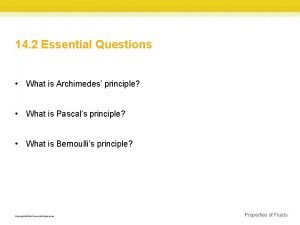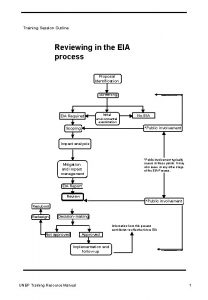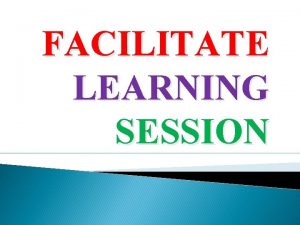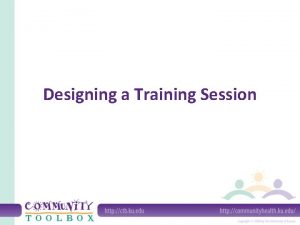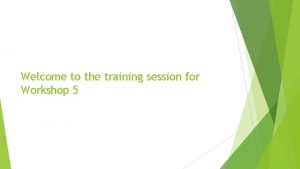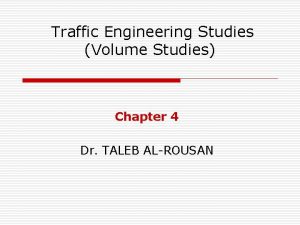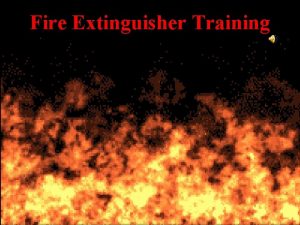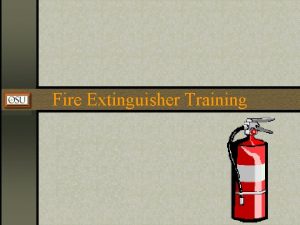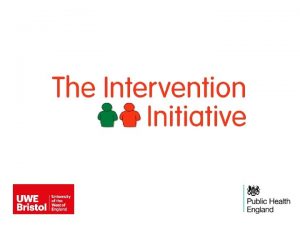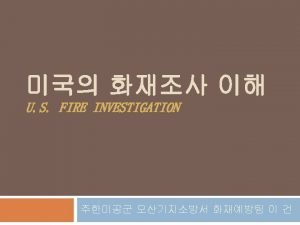Fire Training Six monthly training session In accordance














- Slides: 14

Fire Training Six monthly training session In accordance to The Fire Precaution Act 1997 Amended 1999, 2003 and 2005

Table of contents 1. 2. 3. 4. 5. 6. 7. 8. 9. 10. 11. 12. Fire prevention Fire detection Muirfields duties Elements necessary in order for a fire to take place Types of fire fighting equipment The use of a fire extinguisher Preventing fire and smoke spreading Location of fire alarm call points and fire extinguishers Understanding evacuation procedures Evacuation procedures Safety precautions when sweeping the premises Some facts

Fire Prevention n 1. 2. 3. 4. 5. 6. Daily checks should be carried out in your area of work and should include the following: Empty all waste bins and dispose of safely Check that fire exits are kept clear Report anything which could represent a serious and immediate fire safety danger Co-operate with the Muirfield Riding School to allow them to comply with their fire safety responsibilities Unplug any unused electrical appliances Where possible, keep doors closed and do not use wedges

Fire Detection Some of the ways a fire can be detected: n n n n Smoke under doors Smell of smoke Door or door handle hot Crackling noises Blackened windows Visible flames Fire alarm (smoke, heat detectors or call point activation)

Employers Duties The Muirfield Riding School is responsible for the safety of all who enter the premises, some of these responsibilities include: n n n n Providing a means of detecting fire and raising the alarm Provide a safe means of escape Provide a means of fighting fire Provide fire training Provide fire evacuation training Provide a safe area for assembly Produce a Fire risk Assessment

Elements necessary in order for a fire to take place A fire needs 3 elements to start, these are: n Heat – Naked flames, smoking materials, electrical equipment, friction , hot surfaces etc. n Fuel – Wood, paper, textiles, plastics, flammable liquids and gases, waste materials, dust fluff etc. n Oxygen – Airflow, oxygen cylinders, oxidising materials etc. Remove any 1 of the elements and the fire dies Smother – Remove oxygen Cool – Remove heat Starve – Remove fuel

Types of Fire Fighting Equipment n n n CO 2 Extinguishers – 2 Kg Black, Class BD, 8 Seconds (Flammable Liquids, Live Electricity) Water Extinguishers – 9 Lt White, Class A, 50 Seconds (Wood, Paper and Textiles) Foam Extinguisher – 6 Lt Cream, Class AB, 30 Seconds (Wood, Paper, Textiles, Flammable Liquids) Fire Blankets Cooking Oils, Deep Fat Fryers Fire Doors

The use of a Fire Extinguisher Always remember: n Use the correct Extinguisher for the job n Use the extinguisher as a means to aiding your escape to fresh air n Check the horn on a CO 2 extinguisher for defects and never hold the horn during or after operation n Always test the Extinguisher before use

Preventing Fire and Smoke Spreading So, how could we stop a fire from spreading? n n Keep fire doors closed at all times, do not use door wedges Regularly checks smoke and fire seals on doors for defects Do not stockpile rubbish, piles of paper etc. Switch off unused lights and sockets

Location of Fire Alarm Call Points and Fire Extinguishers

Understanding Evacuation Procedures Evacuation procedures form an important part of fire training. Knowledge concerning key facts are important and will add to the safe evacuation of all, these include the following: 1. Attend fire training 2. Learn where all fire exits are located 3. Treat all fires as dangerous 4. Ensure all doors are closed behind you when evacuating 5. Leave the building and stay at the assembly point until given the all clear 6. Only the Fire Officer can give the ‘All Clear’

Evacuation Procedures We will now look at different areas of the building during evacuation, these includen Arena n Administration Building n Fire Marshals n Fire Cards

Safety Precautions when Sweeping the Premises n n n Never attempt to sweep an area without instruction Always test a door for heat by using the back of your hand before opening Always ensure that the fire does not come between you and the exit Ensure all doors are kept closed behind you Call out to attract attention Report back to the fire marshal in charge of the evacuation

Some Facts n n n Each year 20 Fatalities and 200 serious injuries are caused by workplace fires 86% of all fires are preventable The majority of people killed or injured in fires are so as a result of smoke inhalation and not the fire itself Anyone caught in a smoke filled environment may have no longer than 2 minutes before losing consciousness People are still being killed or injured due to the wrong use of fire extinguishers 5% of all fires are caused through arson
 Hydraulic machines move heavy loads in accordance with
Hydraulic machines move heavy loads in accordance with Reichstag fire who was the fire starter
Reichstag fire who was the fire starter Canvas connection hvac
Canvas connection hvac Uttar pradesh fire prevention & fire safety rules, 2005
Uttar pradesh fire prevention & fire safety rules, 2005 Rwi are
Rwi are Race fire safety
Race fire safety Classify each polygon
Classify each polygon Training session outline
Training session outline Facilitate learning session
Facilitate learning session Training session design
Training session design Welcome to the training session
Welcome to the training session Talk boost tracker
Talk boost tracker Team4 nyla
Team4 nyla Traffic engineering studies
Traffic engineering studies Housekeeping monthly may 13 1955
Housekeeping monthly may 13 1955
